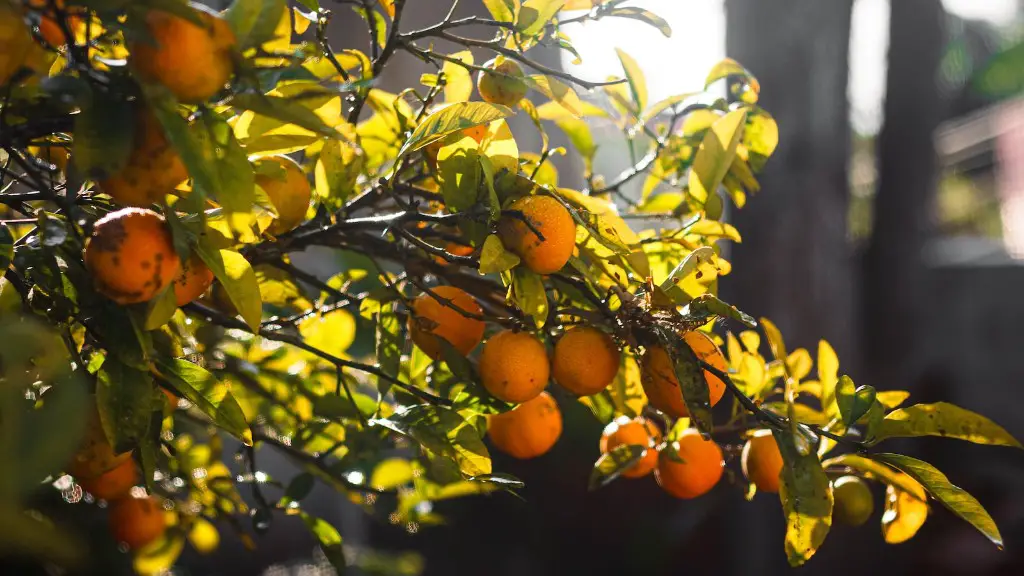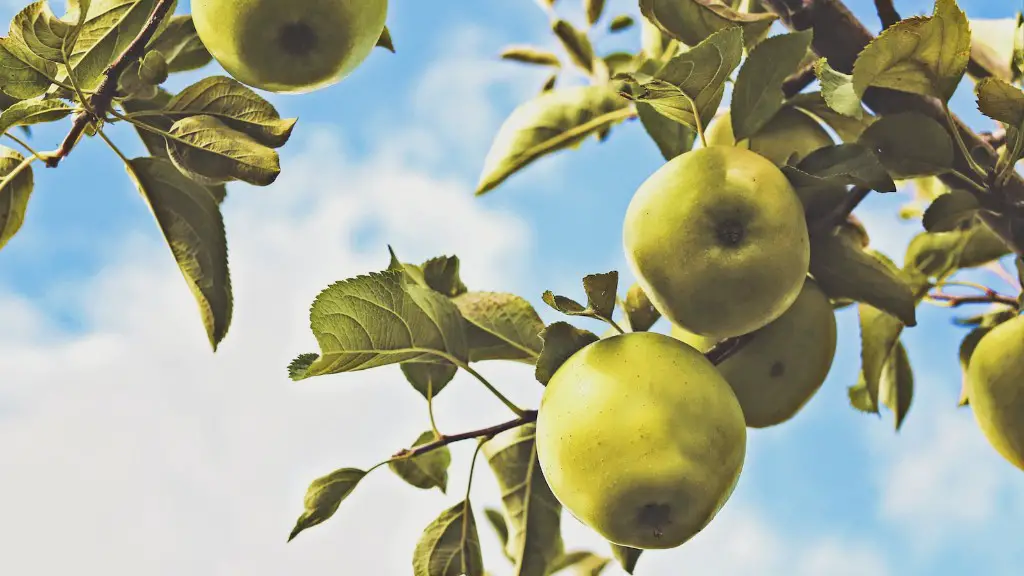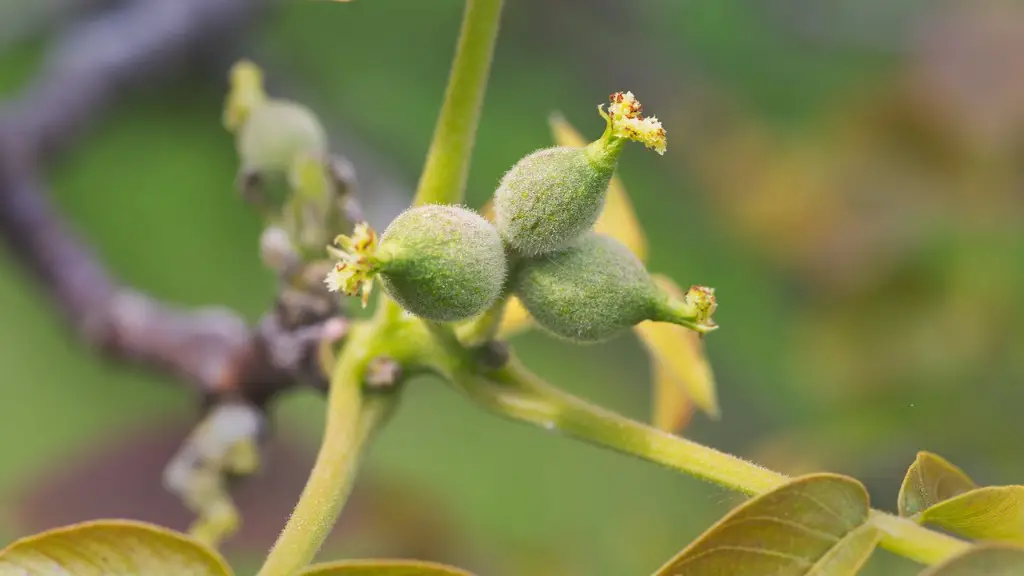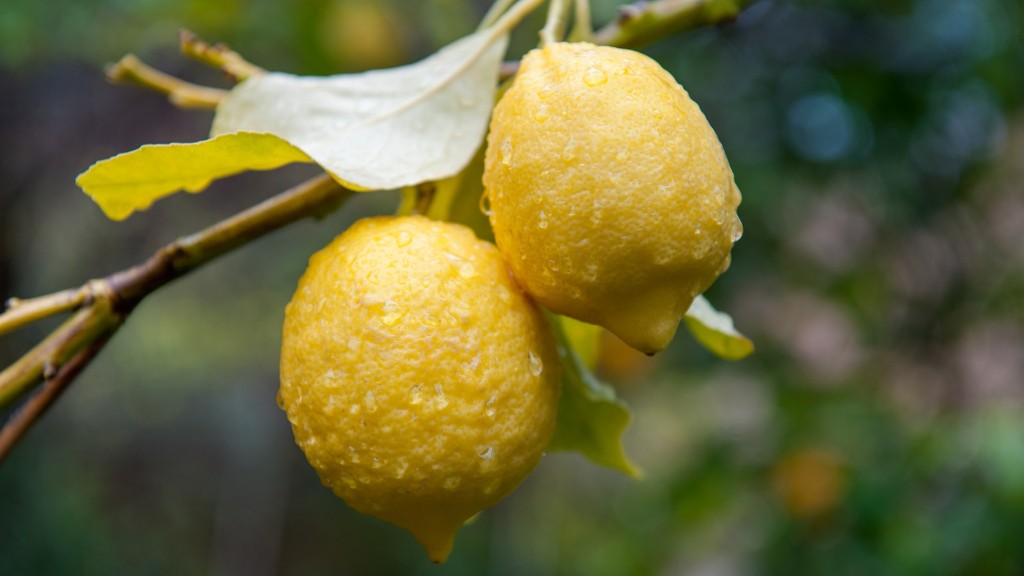The lemon tree is a popular, fruit-bearing tree found in many areas of the world. A lemon tree typically fruit between December and April, depending on the climate and geographic location, but some varieties can be found fruiting as late as June. The amount of fruit produced is largely dependant on the growing conditions and care taken of the tree. The fruit size and yield will be reduced if the lemon tree is not adequately supplied with adequate moisture, nutrients, and sunlight.
The fruit will be ready to harvest when it has reached a full yellow color, regardless of the size. The flesh of the fruit is juicy and tart, although it can vary in flavor based on the variety and the environment in which the tree is grown. Lemons can be used for a variety of culinary dishes, or simply just eaten or juiced for their unique flavor and vitamin C content.
When caring for a lemon tree, it is important to prune in order to promote growth and fruit production. Pruning should be done during the dormant winter season. Additionally, during the summer, when temperatures exceed 30°C, the tree should be watered more frequently than in cooler months, though it should still be done sparingly. Over-watering can lead to root rot, which can threaten the life of the tree.
Fertilizers should be used at least twice a year, after the fruit has been harvested and again in the spring when buds start to form. Foliar fertilizers can be used throughout the year as needed. Gardeners should be aware to use fertilizers with great caution, as too much fertilizer can lead to weaker fruits and affect the taste.
In some climates, winter damage to the lemon tree may be a risk. During cooler months, temperatures below 4°C can potentially harm the tree or cause it to fruit less in the coming season. To minimize the risk of damage, the tree should be mulched or wrapped in a covering before cold snaps. In locations where frost is possible, the tree should be moved inside a protected greenhouse or protected by other methods.
The lemon tree’s fruit can also be affected by various diseases and pests. Scale insects and mites are some of the most common threats to lemon trees. To reduce the potential of harm to the tree, organic pesticides can be used as a preventative measure. Additionally, during the summer, a strong spray of water can help eradicate any unwanted pests.
Pruning Lemon Trees
Pruning is an important part of upkeep for a lemon tree. Pruning should be done during the dormant winter season to keep the size in check, which will help with air circulation in the summer. Additionally, pruning can help the growth of fruit-bearing shoots, as well as eliminate dead, diseased, or dying parts of the tree. Pruning should be done with caution, however, as it can inhibit the tree’s health if overdone.
When pruning, aim to remove large, thick branches back to their point of origin. When trimming branches, leave at least three-quarters of their circumference in order to avoid encouraging more growth in the same area. Pruning should never be done with hedge shears, as it can lead to the spreading of disease and could potentially cause further harm to the tree.
In periods of dryness and drought, pruning should be done sparingly in order to minimize damage to the tree. This is especially true for young trees and fruit-bearing branches, as these are more susceptible to adverse effects from heavy pruning. As such, it can be beneficial to wait for wetter periods before manipulating the tree.
When done correctly and sporadically, pruning can help promote healthy growth in lemon trees, improve air circulation, and facilitate better fruit production during the fruiting season. Nonetheless, it is important to be aware of the consequences of pruning and to never do it recklessly.
Propagation Techniques
The lemon tree can be propagated in several ways, though the most common method is by seeds. The crack open the fruit and separate the inner seed, which can be planted in either potting soil, or directly in the ground. Seeds should be planted at least a quarter of an inch below the soil and then kept away from direct sunlight until they sprout.
After the seeds have sprouted and the seedlings appear, they are ready to be put in their permanent home. A slightly acidic and well-draining soil is recommended for the growth of lemon trees. Additionally, the soil should be kept slightly moist for the duration of the growing season, as roots need to be hydrated in order to thrive.
Lemon trees can also be propagated from suckers, stems, or even from a seedling nursery. These methods are generally quicker and much easier than from seeds, however the outcome is not guaranteed. Additionally, with some of these methods it is possible to get a different variety of the lemon tree.
When propagating the lemon tree, it is important to be proactive and attentive. Temperature, water, and soil management are essential elements in ensuring a successful outcome. Additionally, it is important to check regularly for pests, diseases, and any other risks that may jeopardize the health of the lemon tree.
Frost Protection
Frost protection is essential in order to maintain a healthy lemon tree, especially during colder months, when temperatures can plummet to dangerous levels. To protect a lemon tree from frost, it is important to build a frame of 4-5 foot fencing around the tree, which will help retain heat near the trunk and main branches, while allowing airflow underneath.
Another effective method to protect a lemon tree from frost is to cover it with a sheet or tarp overnight or during a cold snap. This will help retard heat loss and protect the tree from extreme temperatures. An old bed sheet or an old blanket can work just fine for this purpose.
Care and protection should also be given to the soil during colder months. If the soil does not remain moist and warm, the roots will not get enough moisture and could potentially freeze. Adding a thick layer of mulch can help the soil retain moisture and warmth and protect the roots from direct contact with the cold ground.
It is also important to protect young seedlings and saplings, as they are more susceptible to cold damage. For young lemon trees, it is possible to use a light bulb to help reduce the frost effects and keep the tree warm, as well as irrigate the soil to prevent dehydration.
Pests and Diseases
Lemon trees, like most trees, are susceptible to a variety of pests and diseases. The most common pests include aphids, scale insects, spider mites, and thrips. These pests can damage and stunt the growth of the tree, leading to the production of fewer or smaller fruits.
Common diseases that affect lemon trees are Alternaria blight, phytophthora root rot, gummosis, and citrus canker. These diseases can cause serious harm to the tree, including death. It is therefore important to monitor the tree and be aware of any signs of distress, like discolored leaves or wilting branches.
To keep a lemon tree healthy and avoid pest and disease damage, it is important to maintain proper care. This includes regular, deep watering and adequate protection from harmful sunlight and extreme temperatures. Additionally, proper pruning and fertilization can help ensure the tree’s health.
Organic pest control methods should also be used to avoid the potential of environmental damage. This includes manually removing pests, introducing beneficial pesticides to combat unwanted pests, such as ladybugs and bumblebees, and ensuring proper sanitation of the tree’s area.
Harvesting Lemon Trees
Lemon trees are typically ready for harvest after 7-9 months of growth. Fruits can be harvested when they have reached their full, yellow color. They can generally be left on the tree until they are ready to be used, though have a tendency to shrivel if left too long.
When harvesting the fruits, they should be cut from the branch with an upward twist to avoid damaging the tree. It is a good idea to wear gloves when harvesting, as some varieties of lemon tree can have thorns that can prick the skin. Additionally, as soon as the fruit is picked, it should be stored in a cool and dry place to avoid rotting.
Fruits should be used only when needed, as lemons do not keep for very long fresh. As soon as the fruits are picked, the tree will begin to produce more, with the best production seen when harvesting the fruits at the end of the fruiting season. Additionally, if the fruit is removed before full maturity, the tree could be shocked, leading to a halt in production.
With proper care and maintenance, a lemon tree can produce a bountiful harvest for many years. It is important to monitor the tree for any signs of pest or diseases and to provide it with the adequate environmental requirements to ensure a healthy build. It is also important to pick the fruit at its optimal ripeness and store it correctly to ensure the best flavor.





